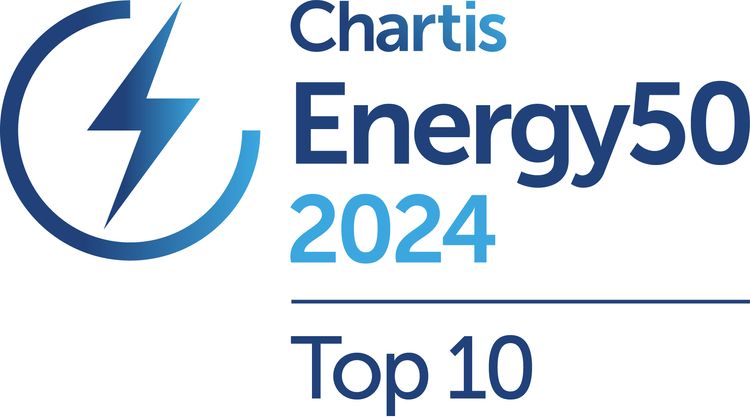10 Things You Need to Know Before Implementing a New ETRM Software System

Key Takeaways
- Understanding current and future needs will help you choose the right ETRM/CTRM software solution
- Clear expectations enable smooth implementations
- Include stakeholders from the beginning and gain their support for any ETRM implementation
As you are likely well aware, implementing a new ETRM solution is a big undertaking. It often follows several months (or more) of assessing needs across various stakeholders, weighing options, interviewing vendors, and convincing top management that the investment makes sense.
Choosing the right system, aligning all stakeholders, and moving forward consumes a lot of time and energy (not to mention the significant financial investment), so getting your ETRM implementation right is crucial.
…No pressure, right?
The good news is there are ways to make sure it goes as smoothly as possible. Here’s what you need to know.
10 Things You Need to Know Before Implementing a New ETRM Software System
- Project Goals
- Be Clear About Your Needs
- Scope and Pricing
- Total Cost of Ownership
- ETRM System Security
- Integrations With Other Systems
- Trading Needs Covered for the Full Lifecycle
- Business Process Impact
- Project Members
- Regulatory and Compliance Obligations
1. Project Goals
First things first: no company will buy into the idea of investing time and money finding — and implementing — a new ETRM system without a solid reason.
Everyone involved in the implementation needs to understand the goals of the new project, and that begins with reviewing and outlining the limitations of your current system. Is it too slow? Difficult to use? Doesn’t handle everything you trade? Be honest here.
Once you understand the limitations of your current system, outline and verify what you expect to achieve with a new ETRM system. Make sure everyone — and we mean everyone: stakeholders, traders, risk managers, IT, etc. — understands why a change is not only necessary, but also beneficial to them and the organization.
2. Be Clear About Your Needs
A modern ETRM system will provide new functionality, including faster, more reliable, and more robust reporting; automated trade management (like deal capture); the ability to handle different assets and instruments; and real-time position reports.
To get the right solution for your company, it’s important to know how you plan to use your new ETRM system works. While many of the provided features overlap, every ETRM vendor offers something different.
- Evaluate which features will benefit your organization and team
When you begin searching for a new ETRM system, you may have a wish list of all the features you want. However, thanks to budget constraints, technical limitations, or even your evolving business, the reality may require some compromises. Prioritize the features that are most important to your business over shiny bells and whistles you may never use. - Create a list of reports your team will need, both now and in the future
Different ETRM systems offer a variety of reports, such as trade history, inventory movements, real-time position and exposure, pricing (and market volatility), VaR (current and over time), profit margins, and more. Matching the reports you need with the reports an ETRM system provides is essential. - Outline the processes that will change
A new ETRM system helps improve efficiency in part through process improvements. Operations that used to be handled in separate systems – including scheduling, invoicing, settlements, trade capture, risk management, and inventory management – can now be managed on one platform, requiring completely new processes. - Ensure the ETRM vendor sets up the system according to your needs and provides the necessary training
Getting the most out of your new ETRM system requires understanding how to use it. The right training will ensure your team is up and running on the new system quickly and effectively.
3. Scope and Pricing
If you have an ETRM vendor (or vendors) in mind, have them explain exactly what an implementation requires. Have them walk you through every integration, system requirement, etc., to ensure you have a clear, accurate vision and understanding of cost for what they will do. Once everyone agrees on the goals, the vendor, and the implementation timeline, stick with it.
- Drill down from goals and needs to specifics. Map out the key processes, inputs and outputs in sufficient detail to start planning for team size and time commitment. This will also aid your vendor in quoting pricing.
- Be clear about “must haves” vs “nice-to-haves”: limiting scope is a key pricing lever.
- Identify all the critical reporting and data flows that must be replaced. Gather input/output file specs and report layouts. Identify people and functions that expect output from the ETRM, and how flexible they will be in their expectations.
- If you are implementing multiple commodities, trading desks, or business units, each of them will need an individual scope — and a plan for what is to be implemented in sequence or in parallel.
- Be sure to include your audit and control needs as part of the scope from the beginning.
4. Total Cost of Ownership
Along with a clear vision of project scope, knowing the total cost of a new system is important. Here are some items after the initial software purchase:
- Professional services: Data migration (especially when moving from multiple systems to a centralized system), system integrations (including fees to other vendors if required), etc.
- Ongoing routine maintenance, including upgrades and patches
- Employee training, support, and onboarding
- Updates to current infrastructure (legacy systems often run on older computers and servers, so you may need to upgrade your IT infrastructure to run the new system. Excel, for example, takes very little computing power to run.)
- Updated internet bandwidth
- Increased data security measures (if you plan to move to a cloud-based, SaaS system)
1. Fixed-fee: One, fixed expense is paid upfront at the start of the project
2. Time + Material (T&M): Costs are accrued based on the project needs and paid at the end of the project
3. Perpetual: Annual licensing fee with the option to pay for support and maintenance separately
5. ETRM System Security
In the first six months of 2024, the United States saw some of the biggest, most damaging data breaches in recent history. ETRM systems store sensitive and proprietary data, so any new system must have the highest level of data security possible.
Review potential vendors’ security measures and any necessary certifications (such as SOC) to ensure they’re up-to-date and comprehensive. We also recommend involving your IT department in the selection process to understand their security requirements for new systems.
6. Integrations With Other Systems
An ETRM that can integrate data with existing systems boost your business value with significant time savings, reliable access to information when you need it, and more. Here are some key considerations:
- You will likely need your system to connect with an exchange (or ISO) to bring in your trades. For OTC trading, you may be able to connect to an internal system, or use spreadsheets to upload.
- You may require a market data source for daily marks, or your internal built (proprietary) curves, as well as any additional position/valuation data sources.
- You may want to integrate with an accounting system to pass MTM or settlement records to your P&L or to generate invoices.
- You may need to connect to a BI tool (or Excel) for additional reports and analysis.
- Other options may include an asset management system, scheduling system, logistic system, etc.
Before you begin an implementation, you need to know which system(s) the new ETRM system needs to integrate with and how those integrations will work. Be sure to gather technical requirements for each of the integrations (including APIs, data formats, and protocols required), talk with vendors and internal resources to determine what work is required, ensure internal resources have the capacity to do the work, and assess the current infrastructure to make sure the integrations you want can be managed.
7. Trading Needs Covered for the Full Lifecycle
A new system may not handle all your commodities – either current or planned. Some systems are not capable of handling carbon credits or renewables, or you may have some trades that use pricing models that are not standard to your system. For example, Power Purchase Agreements (PPAs) are complex contracts that include customized pricing formulas, long-term capacity profiles, and bespoke payment terms.
It’s important to know of the system’s capabilities upfront so you have a plan for managing the assets or instruments that are not covered in the new system. Ask yourself and your team the following:
- Can the system handle your requirements for confirmation, marking, settling, delivery, invoicing, payment?
- If you need custom data to enrich your trades, is this easy to set up and maintain?
- Is the valuation engine capable of handling specific items such as power block conversion that pertain to your business?
8. Business Process Impact
For better or worse (hopefully for the better), new workflows impact how employees manage their daily tasks.
Make sure you know which business processes will change and how those changes will impact your team. You may face pushback from employees whose jobs will change significantly or who may fear the new, more efficient system will replace their jobs.
In some cases, you may be choosing to make small ease of use concessions in exchange for more robust audit and traceability — and employees need to be educated on why the extra work is good for the company as a whole.
Also, as mentioned above, implementations require work from internal resources, and busy employees will not be excited to add more work to their plates. Thankfully, there are several ways to help your team feel comfortable from Day One.
9. Project Members
It is essential that you know who will be involved in the project and that you involve them in the entire process from the start. This will ensure their support, engagement, and assistance in the implementation, removing potential obstacles in advance.
- Project sponsors need to understand the value of the new system and will want routine updates throughout the implementation. Once the system is live, they will look for positive results.
- Team leads will provide hands-on input in choosing the new system and managing the implementation process to ensure the project stays on track. You need to make sure they have the capacity to do so and clear goals to report on.
- The system users need to understand how the new ETRM system will impact their daily jobs and what they need to do to prepare for it, including helping with the implementation. You need to be sure they have the capacity to be involved with the implementation and learn the new system while continuing to do their jobs.
- Everyone else the project impacts — from finance, accounting, trading, risk, compliance, IT, etc. — needs to be fully aware of the project and how it will impact them so there are no surprises. You do not want to begin a new accounting process, for example, without warning the accounting team in advance. They may also get excited about the new system and ask for integrations (as discussed above) and you will want to determine budget for such requests.
10. Regulatory and Compliance Obligations
This is not optional. A new system may automate compliance checks or produce reports to help you adhere to reporting requirements such as Sarbanes-Oxley (SOX), Dodd-Frank, and EMIR. Make sure you know exactly how the new ETRM system will track and provide required data, to ensure you do not miss any obligations or deadlines and that your data is accurate and timely.
For example, SOX requirements on auditing user access should be considered when designing your user roles, permissions and groups, and setting up the administrators to be in charge of them.
The More You Know, the Better Your Implementation Will Be
Bottom line: don’t skimp on planning and preparing for your ETRM implementation. Take the time upfront to understand your goals, know how the system will achieve those goals, and collaborate with your team so everyone is prepared and working together.
If you create a clear and comprehensive plan and involve all stakeholders in the process, your team will be engaged and committed to the project’s success. At the same time, a careful evaluation of technical requirements and integration challenges — before you choose a new ETRM system — will help you avoid project delays and unexpected costs.





